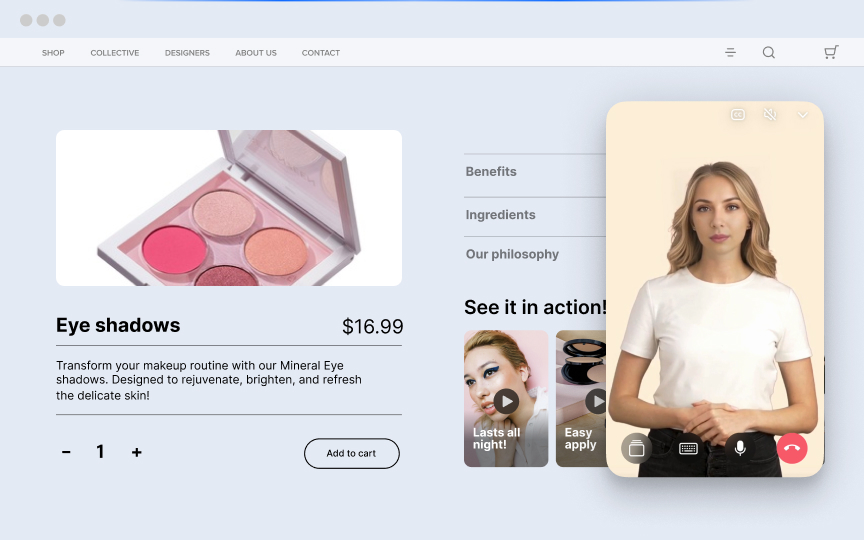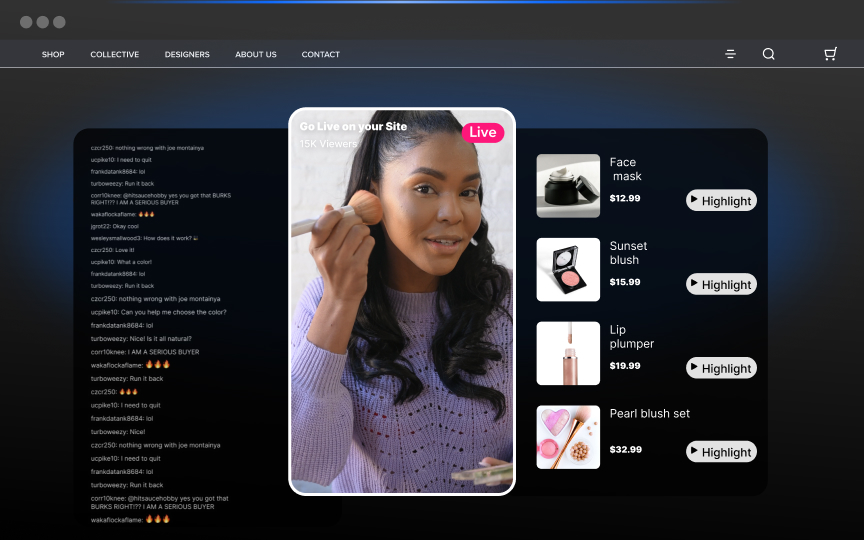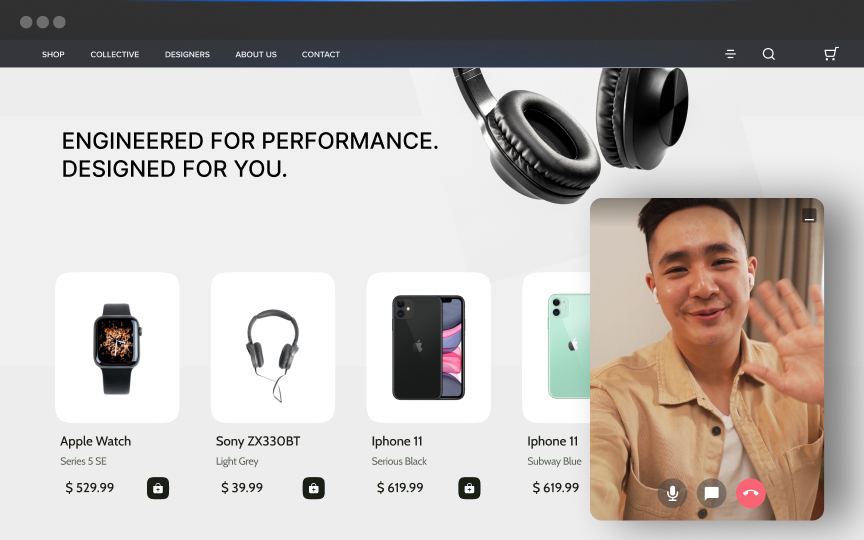Are you a marketer or brand owner who relies on cookies to learn more about how users interact with your website?
If the answer is yes, get ready to change how you collect your data.What started with Firefox and Safari will soon see its fate sealed as Google seeks to phase out third-party cookies by late 2023. However, according to a Statista survey, 83% of digital marketers still rely on third-party cookies for tracking their customers.This inevitable death of third-party cookies has already sent brands and digital marketers scrambling for new ways to gather customer data. According to 41% of marketers, the inability to track the appropriate data will be their most significant challenge.Internet users have been actively demanding privacy protection laws and policies for decades. Surveys have already shown that 76% of people would rather ignore the ‘Accept Cookies Banner' despite an obstructive experience than actually accept them. Google's announcement in 2020 iterated:
“Users are demanding greater privacy–including transparency, choice and control over how their data is used–and it's clear the web ecosystem needs to evolve to meet these increasing demands.” Source: Google
With such concerns on the site visitors' end, the end of third-party cookies was always inevitable. People want their data in safe hands or with websites they trust.According to W3Counter's Browser Share, by January 2021, Google's Chrome browser accounted for a market-leading 65.3% of all internet users. The search engine giant noted that the step to block third-party cookies was a blunt undermining of various ad-supported websites but a necessity that cannot be ignored.While we can still fall back to second-party data, it has its own limitations over third-party data like data quality, data privacy, data cost, data ownership, and limited data availability.
Major Concerns For Brands/Advertisers
As brands are losing access to third-party data, they are concerned about new ways of tracking and collecting customer data on both own website and on the mobile apps. Not every brand has mastered the science of collecting and analyzing first-party data and integrating data to create ads for multiple audience segments across multiple channels, and hence, some of the significant concerns they are fostering include:
1. Inability to Track & Collect User Data From Other Sources
[caption id="attachment_22074" align="aligncenter" width="615"]

A breakdown of how third-party cookies are created[/caption]
Source: TMS
Advertisers utilize third-party cookies to get data on user's browsing and online behavior. They gather information on the popular websites and mobile apps that customers visit. And they keep track of the things that have been bought and the things that they have expressed interest in - customer intelligence.
The user then leaves the website and goes to one that is unrelated to the product. Yet because of the customer insights, the product they expressed interest in is advertised on the current website. This is the outcome of third-party cookie tracking.Brands that cannot access first-party data from other websites are concerned about getting the initial information they need to understand the online behavior of potential customers for creating strategic marketing efforts.
2. Is This the Death of Retargeting Overall?
The example mentioned above is a typical act of “retargeting.” Often labeled as creepy and seen as controversial, only 30% of consumers had a favorable view of retargeting.However, looking at retargeting from a brand perspective is a different story. Brands enjoyed better click-through rates and found retargeting very feasible while entirely dependent on third-party cookies. The death of third-party cookies has cast a cloud over retargeting overall and is likely to fade away in the long haul. People expect a significant shift in advertising devotes its spending, skills, and energy.
3. No Way to Gauge Audience/Consumer Interest via Engagement
The reliance on third-party data is real. We still see 83% of brands using it to gauge consumer engagement and interest (customer's consent notwithstanding). These brands are scrambling to find alternatives to consumer engagement data, which was easy with access to third-party data.This is where first-party data truly delivers. Brands need to refocus their energy to leverage this data as easily as they did with data from third-party cookies.
4. How to Interact with Audiences That Will Convert?
Brands have always succeeded in interacting with (potential) customers by using third-party cookies via ads. Often considered overstepping by data privacy advocates, brands can target their ads depending on where the customer is and what they are looking for.Hence, they get high CTR with relative ease. With no third-party cookies, brands need to find new ways of creating active engagement with their customers that can also be a source of reliable data.A marketer's concern over the death of third-party cookies is understandable. However, these cookies had their drawbacks, which will not exist once advertisers switch over to first-party data.
Why First-Party Data Is Crucial For Marketing
First-party data is the cornerstone for knowing your customers since it is based on actual customer experiences with your brand across a wide range of historical and real-time touchpoints rather than lookalike behavior that occurred weeks or months ago.
1. Explains Customer Relationship with a Brand that Third-party Data Cannot
Third-party data is a glimpse of your customer's shopping habits and interests, but nothing beyond that. In the case of first-party data, it is created by the brand's host domain, gathering details that give a much more in-depth customer relationship analysis.The first-party cookie remembers essential information, such as the things they put in their shopping carts, usernames and passwords, and even preferred languages. If you analyze these behaviors, you will get a vivid picture of a customer's persona and experience on your website, which would have never been possible with third-party cookies.
2. Better Quality, Relevance, and Accuracy of Data
[caption id="attachment_22075" align="aligncenter" width="591"]

Unlike second and third-party cookies, first-Party data is directly acquired from customer activity. It is, thus, accurate and relevant.[/caption]
Source: AI Multiple
The good thing about first-party data is that it is entirely yours. Unlike third-party data, you don't have to rely on external parties for this information. Any customer-related information collected is directly made available to you. It is, thus, of supreme quality and highly accurate, solely relevant to your brand.
3. Critical for Customer Retention & Building Customer Loyalty
Most brands know that keeping consumers is more profitable than acquiring new ones. Repeat customers spend 33% more with a brand than new customers.In this day and age of consumer empowerment, understanding and responding to customer wants, requirements, and purposes with 1:1 contextual relevance are essential for driving brand loyalty and retention. What could be a better strategy than utilizing the data that documents each client's interaction with your brand?
4. Opportunity to Explore New Marketing Avenues
As advertising and marketing dynamics change with third-party cookies' death, brands have a golden opportunity to leverage new and more relevant ways of customer acquisition and engagement. Marketing tools have evolved by and large, and customers are shifting towards brands that create an experience rather than just offering a product or a service.Video commerce, including live shopping and, is one of the fastest-growing marketing methods today. This form of video commerce allows brands to interact with customers in real time and to collect quality first-party data while doing so
Video Commerce as an Ideal Tool to Leverage First-Party Data
There are several ways by which brands can acquire first-party data. However, what truly matters today is the data quality that brands can rely on to determine engagement and conversions.For example, a website may provide you with names and addresses, or an email may help you understand click rates and open rates. But they fail to create a real-time connection with the customers and how customers respond to it, which is only possible with the latest marketing tools like video commerce or live shopping.Video commerce combines two of the hottest trends – online shopping and live streaming e-commerce. Customers participate in live stream video shopping to connect with the brand, meet other customers, and make quick buying decisions. It's a great opportunity for customers to interact with the business and inquire about the merchandise or service. This will be especially very beneficial to eCommerce and retail industry to drive sales.As a result, brands having access to various rich data points continuously generated through customer interactions (clicks, video views, chat messages, reactions, average time spent viewing videos, add-to-cart rate, average order value, etc.)Firework has been helping brands leverage this marketing tool to interact with customers, humanize their operations, and make them more approachable. Brands can dramatically improve their business intelligence capabilities using Firework's full-funnel video commerce solution by having access to data points like:
- Traffic flow
- Customer activity: CTR
- Time spent on video consumption
- Reactions + comments
- Add to cart rates
- Actual conversions
- Category preferences
- Search data and real-time customer feedback via live streaming experiences (chats + reactions)
Crafting Campaigns Influenced By First-Party Data Analysis
Once you understand the power of video commerce as an ideal source for first-party data, it becomes easier for you to get back to your audiences with campaigns and strategies that can be hyper-personalized to their purchase behaviors. In 2019, consulting firm BCG reported that brands offering personalized services noted a 25% revenue increase.Here's a four-step strategy guide for leveraging first-party data from livestream video shopping events and adapting them according to your brand's needs:
1. List the data points you wish to track
Events generate a plethora of first-party data, ranging from basic names and details to more in-depth metrics such as add-to-cart rates. However, for a campaign, you must focus on the data points that will help you create successful conversions.For example, if your marketing goal is to reduce shopping cart abandonment, the attention should rest on add-to-cart rates and similar behavior. It helps you personalize your communication with the customer.
2. Collect your data
While conducting live stream shopping, ensure you collect the data around your marketing goals. Other ways to collect your own data are following up with feedback forms and offering discounts, offers, or limited-time deals that your customers will enjoy.
3. Store your data
The data collected is not a one-time deal. You must save it effectively in customer relationship management (CRM) software or other tools that help you use the data later. You can also use the data obtained from different livestream events and compare them while analyzing.
4. Analyze post-livestream data for adding to and enriching the first-party data pool
After a live video shopping session, the critical task is to evaluate the success rate through the data you've gathered. It is one of the most crucial steps in the whole process as it gives you insights into your current performance, bottlenecks, and ways to improve in the future with live commerce.Your browser does not support the video tag.
Firework helped American Girl access first-party data with its live shopping event.
Source: Firework
Firework's collaboration with American Girl for their video commerce event helped analyze several data points, including:
- 25% increase in engagement rate
- 11% click rates showcasing purchase intent
- 250k live and replay views
This data can now help them to highlight the products which people clicked on the most, reach out to the people who engaged with them and track customers at different stages of the customer journey. Every livestream also enriches your data pool as it refreshes the engagement and clicks rates. Hence, conducting them regularly is a win-win for the brands.Video commerce is an essential tool for bringing customers to your website, giving you access to first-party data you can trust. Global leaders use interactive, shoppable video content and livestream shopping to improve user experience and data ownership.Millennials and Gen Z make up most of today's consumers. They demand an engaging eCommerce experience at every turn, wanting entertaining videos, a strong brand presence, and constant innovation.With a full suite of video commerce solutions from Firework, which adds authenticity, transparency, and community to their digital experience, you can make this integration possible for your brand. Make an appointment for a live consultation with Firework to see how your company can develop a video commerce strategy and collect and control your consumer data.
Unlock Exclusive Insights
By submitting this form, you agree to Firework's privacy policy and consent to receive personalized marketing communications. You can unsubscribe at any time.


























.jpeg)





